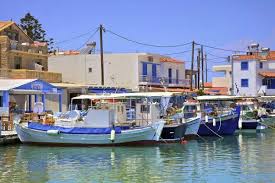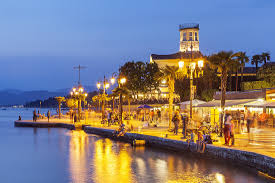Is Italy southern Europe? What is southern Europe culture like? Southern Europe is home to some of the most picturesque and culturally rich countries in the world, such as Italy, Greece, Spain, Portugal and Turkey. This region is famous for its stunning landscapes, captivating history, delectable food and friendly locals – making it a perfect travel guide. This article will give tips on the best places to visit in Southern Europe as well as must-try attractions and landmarks as well as practical advice for planning your trip.
Reasons to Travel to Southern Europe


Another reason to travel to Southern Europe is the stunning natural scenery that can be found throughout the region. With picturesque coastlines and beaches, as well as beautiful mountain ranges, this region is a paradise for outdoor enthusiasts. Whether you’re looking to soak up the sun on a sandy beach or explore rugged mountain trails, Southern Europe has something for everyone.
What is the southern most point of Europe? Or, which is the southern most country in Europe? Southern Europe also boasts pleasant weather year-round, with mild winters and warm summers. This makes it an ideal destination for travelers who are looking to escape harsher climates and enjoy a relaxing vacation in the sun. The Southern Europe countries that make up Italy, Spain, Portugal, Greece, Cyprus, and Malta, as well as parts of France and Croatia.
Finally, Southern Europe is an affordable travel destination, with reasonable costs for food, accommodations, and activities. In addition, travel costs are generally lower there. Southern European people are known for their warm hospitality, family-oriented culture, and passion for food and wine.
Destinations to Visit in Southern Europe
Southern Europe boasts some of the world’s most stunning and historic destinations, each with its own distinct appeal and attractions. From the sun-drenched beaches of Algarve to Athens’ ancient ruins, here are our top picks for sightseeing in Southern Europe. When planning a Southern Europe itinerary, consider including popular destinations such as Rome, Barcelona, Athens, and Lisbon, as well as lesser-known gems like the Amalfi Coast, the Algarve, and Crete.
Spain


Italy
Italy is a land rich in history and culture, offering visitors an array of picturesque cities and landmarks to discover. Rome stands as a must-visit destination, boasting ancient ruins, art museums, Vatican City (home to the famed Sistine Chapel). Florence also exudes art and architecture through its Duomo, Uffizi Gallery and Ponte Vecchio bridge; Venice thrives on canals with charming bridges, historic palaces and gondola rides for an unforgettable experience.
Greece
Greece is famous for its stunning islands, breathtaking beaches and ancient history. Athens is the capital city and home to the iconic Acropolis as well as Plaka neighborhood with winding streets and traditional tavernas. Santorini island boasts white-washed buildings overlooking the Aegean Sea with stunning sunsets; Crete also draws many tourists with its historic towns, beautiful beaches and delicious Mediterranean cuisine.
If you want to visit these countries after 2025, you will need a new type of visa. Launching in 2025, ETIAS will bring more flexibility and comfort to the traveler experience. This will happen thanks to the highly developed pre-arrival verification system and reduced waiting time at the EU border.
Portugal


Finally, it is characterized by a diverse range of Southern Europe landforms, including mountains (e.g. the Alps, Pyrenees, and Apennines), coastlines (e.g. the Amalfi Coast and the Algarve), and islands (e.g. Crete and Sicily).
Top Activities to Do in Southern Europe
The place offers visitors a host of activities to enjoy. From exploring historical landmarks to tasting traditional foods and attending cultural events, this region has something for everyone. Here are our top picks of things to do while in Southern Europe:
Visit Historic Landmarks: Southern Europe is filled with ancient ruins and monuments that have remained unchanged over time. Visitors to Rome can explore the Colosseum, one of the world’s most iconic landmarks, or Athens’ Acropolis which stands as a testament to Greece’s vibrant culture and history.
Discover Natural Wonders: The region is blessed with an array of stunning natural splendor, such as the breathtaking beaches of Portugal’s Algarve or France’s Pyrenees mountain range that runs between them both. Visitors are given a chance to take a break from everyday life and savor these peaceful vistas for some me time.
Experience Traditional Food and Drink: Southern Europe is famous for its delectable cuisine and vibrant culinary traditions. Visitors to this region can savor classic dishes like paella in Spain, pizza in Italy, and wine in Portugal – each providing an insight into the region’s distinct culture and heritage. These dishes provide visitors with a taste of southern Europe at its finest!
Participate in Cultural Events: Southern Europe offers visitors a range of cultural events, such as flamenco dancing in Andalusia or Carnivale de Venezia. These occasions provide an opportunity to immerse themselves in the region’s vibrant traditions and create lasting memories. Southern European ethnicity is varied and diverse, with influences from the Greeks, Romans, Moors, and other historic civilizations.
Overall, Southern Europe is an ideal destination for those seeking an immersive combination of history, culture and natural splendor. Whether it’s exploring historical landmarks, indulging in delectable cuisine or attending cultural events – there truly is something to suit everyone in this region.
Tips for Traveling in Southern Europe


It’s also important to be aware of scams and tourist traps that are prevalent in some areas. Researching common scams beforehand and keeping an eye out for suspicious behavior can prevent falling prey to such scams.
As mentioned above, ETIAS is going to play a huge role in world travel after 2025. By launching the system in 2025, the EU intends to strengthen its external borders and enhance its threat-curbing capabilities. Completing the ETIAS application will take you no more than 15 minutes, and once submitted, you’ll get your application feedback within hours. If authorized, you’ll be able to visit all the EU/Schengen Area countries (except Ireland) for three years in compliance with the Schengen 90/180-day rule.
Finally, planning ahead for high season travel can help you avoid crowds and high prices. Booking accommodations and activities in advance can save you money and ensure availability. With these tips in mind, you can enjoy your trip to Southern Europe to the fullest.
Conclusion
Southern Europe offers a unique blend of rich history, natural beauty, delicious food and drink, and a pleasant climate. In this article, we have explored some of the top destinations to visit and activities to do in Southern Europe, as well as important tips for traveling in the region. By understanding local customs and etiquette, learning basic phrases in local languages, being aware of scams and tourist traps, and planning ahead for high season travel, visitors can have a safe and enjoyable trip.
We encourage travelers to visit Southern Europe and experience all that the region has to offer. Whether it’s exploring ancient ruins, lounging on picturesque beaches, or indulging in traditional cuisine, it has something for everyone. Some interesting Southern Europe facts include that it is home to the oldest city in Europe (Athens), the smallest country in the world (Vatican City), and some of the world’s most iconic landmarks (e.g. the Colosseum and the Acropolis).
